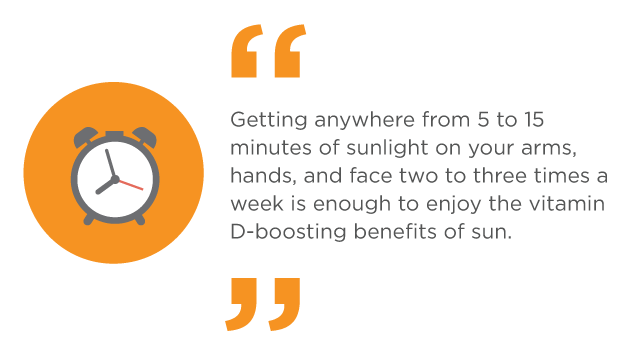Health is Wealth (Small Changes, Big Changes)

The sun is a huge ball that outshines the entire solar system. It improves the earth system. It’s the beauty of the universe. It has been adored and portrayed in many cultures and civilizations around the world.
The significance and meaning of the sun symbol may differ based on the specific cultural setting, but some frequent themes include life, light, warmth power and divinity.
People used to worship the sun, as if it were a god. The sun and moon provide numerous benefits.
Rays from the sun and moon have both advantages and disadvantages. The sun harms the world, humans, the living green system, our inner earth, the atmosphere and the survival of all living species.
The sun is the primary source of energy for all living things. Plants use photosynthesis to capture the sun’s energy and produce oxygen, which sustains life on earth. The sun’s warmth and light promote the growth of crops, forests, and ecosystems, hence preserving biodiversity and environmental balance.
The sun has inspired several works of art, literature, and music throughout history. The beauty of the sun has inspired artists, poets and musicians to create paintings, poetry and symphonies that celebrate its splendour and majesty.
Looking at the sun fills us with amazement and awe at the beauty of the natural world. Its sheer size, strength and beauty elicit sentiments of reverence and humility, compelling us to reflect on the wonders of the universe and our place within it.
Beauty of Sun and How It Promotes Health?
The sun’s beauty stems not only from its blinding luminosity, but also from its profound significance as a celestial deity, representing divinity and enlightenment in cultures all over the world.
Ancient civilizations worshipped the sun as a god or goddess, worshipping it for its life-giving power. The Milky Way is home to more than 100 billion stars, including the sun. It orbits approximately 25,000 light-years from the galactic core, completing a revolution every 250 million years or so.
The sun is one of the elements that our bodies are created from.
It gives us with life force. The sun is a component of our spirit; as you know, its beams replenish our mind, body and blood. It gives us a lift and provides extra energy for our bodies.
The sun is the ultimate catalyst for life on Earth, providing several benefits that improve the planet’s ecosystems and promote the growth of various life forms.
The sun’s radiant radiation provides the critical warmth and light required to maintain life, fueling processes such as photosynthesis, which is the cornerstone of the food chain. Sunlight generates oxygen, regulates climatic trends and powers the water cycle, ensuring the availability of critical resources for terrestrial and aquatic ecosystems.
Additionally, solar exposure allows organisms to synthesise vitamin D, which benefits bone health, immunological function and overall well-being.
Aside from its biological effects, the sun controls the planet’s rhythms and cycles, which regulate circadian rhythms, stimulate serotonin production, and improve mood and mental health. Overall, the sun’s numerous contributions to life on Earth highlight its essential role as the primary source of energy, vitality and inspiration for all living organisms.

The sun is well recognised for increasing vitamin D production, although UVR has numerous other benefits that are not dependent on this pathway.
Direct immune suppression. UVA and UVB radiation can reduce immunity by upregulating cytokines (TNF-α and IL-10) and activating T regulatory cells, which eliminate self-reactive cells. These processes could help prevent autoimmune disorders.
Beauty of Sun and How It Promotes Health?
Alpha-melanocyte-stimulating hormone (α-MSH). When exposed to sunlight, melanocytes and keratinocytes in the skin produce α-MSH, which aids in immunologic tolerance and suppression of contact hypersensitivity. α-MSH reduces melanoma risk via limiting UVR-induced oxidative DNA damage and promoting gene repair.
Calcitonin-related peptide (CGRP). This powerful neuropeptide, which is released in response to both UVA and UVB exposure, affects a variety of cytokines and has been associated to poor immune induction and the development of immunologic tolerance. Mast cells (which cause hypersensitive reactions) play an important role in CGRP-mediated immune suppression, according to a paper in Photochemistry and Photobiology from September 2007. This could explain why sunlight is effective in curing skin problems like psoriasis.
Neuropeptide P. This neuropeptide, like CGRP, is released from sensory nerve fibres in the skin following UVR exposure. This results in enhanced cell proliferation and chemotaxis (chemically mediated migration), but it may also cause local immunological suppression.
Endorphins. UVR raises blood levels of natural opiates known as endorphins. Melanocytes in human skin express a fully functional endorphin receptor system, according to the June 2003 Journal of Investigative Dermatology, and a study published on November 24, 2005 in Molecular and Cellular Endocrinology suggests that the cutaneous pigmentary system is an important stress-response component of the skin.
How does sun promote health?
The sun improves health in a variety of ways, providing both direct and indirect advantages to physical, mental, and emotional well-being:
Sunlight exposure causes vitamin D synthesis in the skin, which is an essential component that promotes bone health, immunological function, and overall well-being. Adequate vitamin D levels help with calcium absorption, bone mineralization, and the prevention of disorders like osteoporosis and rickets.
Mood Enhancement: Sunlight exposure increases the production of serotonin, a neurotransmitter linked to mood modulation, happiness, and well-being. Increased serotonin levels can help decrease symptoms of sadness, anxiety and seasonal affective disorder (SAD), boosting a positive perspective and mental fortitude.
Circadian Rhythm Regulation: Natural light helps regulate the body’s internal clock, known as the circadian rhythm, which controls sleep-wake cycles, hormone release, and metabolism. Sunlight exposure during the day encourages wakefulness and alertness, whereas less light exposure at night signals the body to prepare for sleep, so encouraging good sleep patterns and overall sleep quality.
Skin Health: Moderate sunshine exposure can improve skin health by increasing vitamin D synthesis and melanin production, the pigment that gives skin its colour. Sunlight can help with certain skin disorders like psoriasis, eczema, and acne, but too much exposure can cause sunburn and skin damage.

Immune Function: Sunlight exposure may improve immune function by increasing the generation of white blood cells, which help fight diseases and pathogens. Vitamin D, which is produced in reaction to sunlight exposure, is critical for immunological modulation and defence against infectious diseases.
Cardiovascular Health: Sunlight exposure has been related to better cardiovascular health, such as lower blood pressure and a lower risk of heart attack and stroke. Sunlight increases the generation of nitric oxide in the skin, which dilates blood vessels and improves blood flow, so enhancing overall cardiovascular function.
Physical Activity: Sunlight allows for outdoor activities and exercise, which are necessary for physical health and fitness. Walking, jogging, gardening and engaging in sports are all examples of outdoor activities that increase cardiovascular health, develop muscles, and improve overall fitness.
Pingback: Not only Vitamin-D, It also promotes our health in these ways too! – Healthymefityou
Абсолютно стильные новости мировых подиумов.
Все мероприятия самых влиятельных подуимов.
Модные дома, лейблы, высокая мода.
Приятное место для стильныех хайпбистов.
https://enovosibirsk.ru/news/2023-11-24-zaderzhan-zamestitel-direktora-departamenta-gosudarstvennoy-politiki-i-regulirovaniya-v-sfere-razvitiya-osobo-ohranyaemyh-prirodnyh-territoriy/
https://mskfirst.ru/msk/2023-12-26-kolichestvo-zaderzhannyh-po-predprinimatelskim-statyam-v-moskve
https://sevastopol.rftimes.ru/news/2024-06-03-fsb-rossii-raskryla-agenturnuyu-gruppu-ukrainskih-spetssluzhb-v-sevastopole
https://vladtoday.ru/news/2024-03-31-vstrecha-vo-vladivostoke-s-poezdom-sila-v-pravde/
https://kazantoday.ru/kznpub/2023-12-17-v-kazani-vydelyat-sredstva-na-uslugi-chop-i-trevozhnye-knopki.html
Самые важные новости мира fashion.
Актуальные мероприятия мировых подуимов.
Модные дома, торговые марки, высокая мода.
Новое место для стильныех людей.
https://kazan.rftimes.ru/news/2024-06-16-alina-zagitova-uzhe-segodnya-ya-v-kazani-priletela-na-igry-briks-gde-yavlyayus-poslom
https://sochidaily.ru/read/2024-03-01-samolet-iz-peterburga-v-sochi-vernuli-v-pulkovo.html
https://kirov.rftimes.ru/news/2024-04-09-gk-interstroy-nachinaet-prodazhi-kvartir-v-zhk-ay-petri-v-yalte
https://sevastopol.rftimes.ru/news/2024-03-05-v-sevastopole-otkroyutsya-muzei-novogo-hersonesa
https://chelyabinsk.rftimes.ru/news/2024-07-07-huligany-povredili-trolleybus-v-chelyabinske-postradala-passazhirka
Очень стильные новости подиума.
Важные мероприятия известнейших подуимов.
Модные дома, лейблы, гедонизм.
Свежее место для стильныех хайпбистов.
https://kazan.rftimes.ru/news/2024-05-15-putin-priglashaet-si-tszinpina-na-sammit-briks-v-kazan
Очень актуальные новости подиума.
Важные новости известнейших подуимов.
Модные дома, торговые марки, высокая мода.
Интересное место для трендовых хайпбистов.
https://moda.mskfirst.ru/msk/2024-06-20-vybor-okon-dlya-vashego-doma-alyuminiy-protiv-vinila
Полностью актуальные новости мира fashion.
Актуальные события самых влиятельных подуимов.
Модные дома, лейблы, haute couture.
Интересное место для модных хайпбистов.
https://sochidaily.ru/read/2024-04-08-otelnaya-set-azimut-hotels-vozglavila-reyting-v-rossii.html
Модные заметки по выбору превосходных луков на каждый день.
Заметки стилистов, новости, все новинки и мероприятия.
https://sochidaily.ru/read/2024-09-10-demna-gvasaliya-ikona-sovremennoy-mody-i-kreativnyy-revolyutsioner
Полностью свежие события мира fashion.
Все события мировых подуимов.
Модные дома, торговые марки, haute couture.
Интересное место для модных хайпбистов.
https://outstreet.ru/yeah/11164-5-stilnyh-modeley-chasov-guess-dlya-devushki-v-2024-godu/